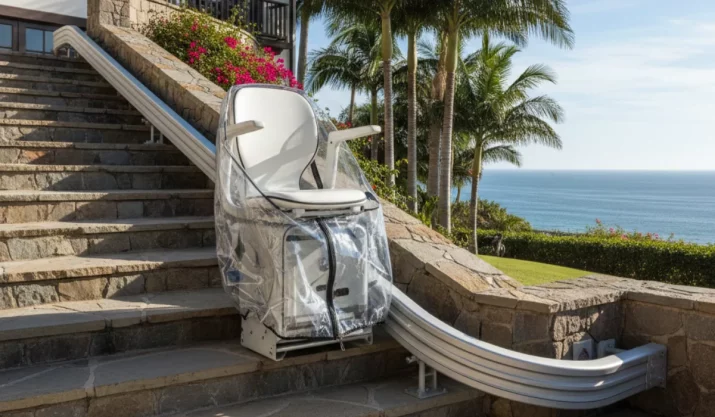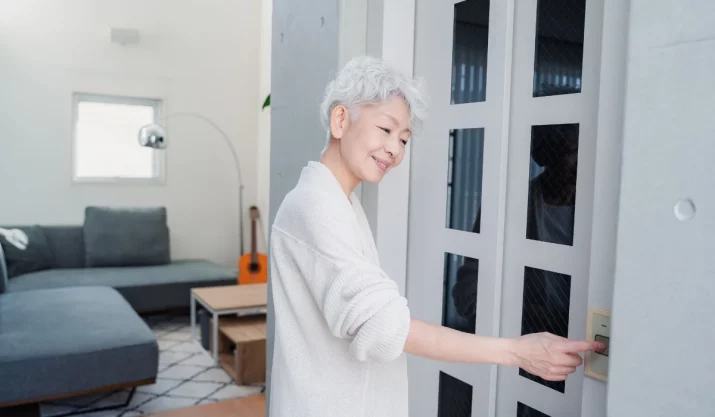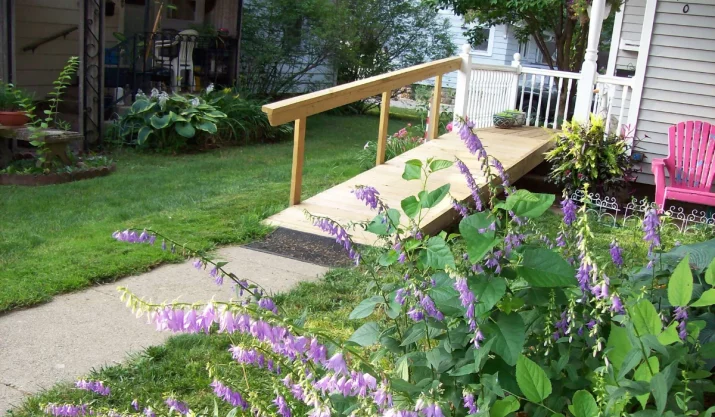Can You Make a DIY Platform Lift? We Don’t Recommend It

Table of Contents
Platform lifts are a game-changer for those who use wheelchairs or have mobility limitations, especially when stairs become a barrier at home.
With the rise of online tutorials and materials from places like Home Depot, Amazon, and Harbor Freight, it’s no surprise that some homeowners wonder: can I just build one myself?
Let’s talk about why, when it comes to platform lifts, DIY isn’t the way to go.
Key Takeaways
- A DIY platform lift is unsafe because it cannot safely support people and heavy weights over time.
- Most homemade lifts violate building codes and lack important safety features required by law and regulation.
- If someone gets hurt using a DIY lift, you may be legally liable, and your insurance may not cover it.
- Certified lifts from California Mobility are safe, code-compliant, and designed specifically for your accessibility needs.
Why You Shouldn’t Make a DIY Platform Lift
The short answer: it’s not safe. A platform lift supports hundreds of pounds of weight and transports people—sometimes multiple times a day—between levels. This isn’t a backyard carpentry project or something you can safely whip together with a winch, pulley, and some joists.
While DIY projects can be great for small home fixes or furniture builds, creating your own lifting platform is simply not one of those safe or realistic options.
Here’s why.
DIY Lifts Aren’t Structurally Engineered for Human Transport
Lifts aren’t just about moving something up and down—they’re about doing so safely, repeatedly, and under a wide range of conditions.
Building one yourself with Unistrut, a forklift platform, or components like a car actuator or electric hoist doesn’t guarantee the structure will support the shifting weight of a person over time. Even slight miscalculations can lead to mechanical failure.
Think about it: if a fall arrester or winch cable slips—or if a homemade pulley system fails—someone could be seriously injured.
You’ll Likely Violate Local Building Codes
Residential elevators and wheelchair lifts are regulated by strict building codes, especially in California. These codes are in place for good reason: to ensure safety, accessibility, and long-term functionality.
A DIY platform lift may not be inspected or approved by city officials, which means you could be fined or forced to remove it entirely.
Worse, it may not meet ADA compliance requirements or pass fire safety standards. Even for hobbyists, this kind of build is out of scope.
Missing or Improper Safety Features Are a Serious Risk
Professionally installed lifts come with a full set of safety features: emergency stops, sensors, secure gates, battery backups, and more.
A DIY version from a YouTube video or subreddit thread might rely on makeshift parts and lack safeguards altogether.
If you’re using a barn door latch instead of a certified locking system, or you skipped the overspeed governor, that’s not just a red flag—it’s a flashing siren.
You can’t rely on DIY tutorials to cover all the safety features a commercial-grade lift is legally and practically required to include.
Sourcing the Right Equipment is More Than Just a Trip to Harbor Freight
Let’s say you find a heavy-duty scissor lift or repurpose an electric hoist. Those are industrial tools—not medical-grade, not designed for people, and certainly not meant to replace wheelchair lifts or residential elevators.
Even if it holds the weight, that doesn’t mean it will provide smooth, safe movement or long-term reliability.
There’s a reason companies like California Mobility work with manufacturers that specialize in accessibility. Each part—from the motor to the guide rails—is specifically designed and tested for lifting people safely.
Your Insurance and Liability Are on the Line
If a friend, caregiver, or family member gets hurt using your DIY lift, you could be held liable, especially if that lift isn’t up to code or properly permitted.
Most homeowners’ insurance policies won’t cover incidents involving unauthorized or non-certified installations. In other words, saving money now could cost a lot more later.
Unlike installing a washer or a new cabinet, you’re creating a potentially hazardous environment. And that’s not something you want to DIY.
Need a Safe Alternative to DIY? Let Us Help
Don’t risk it—call California Mobility instead.
We install safe, ADA-compliant platform lifts across California, built specifically for wheelchair users and those with mobility challenges.
Whether you need a residential elevator, outdoor lift, or stair lift, we’ve got the experience, equipment, and licensing to get it done right the first time.
Give us a call today for a free quote or consultation. We’ll walk you through your options and make sure your home is accessible—safely and affordably.






